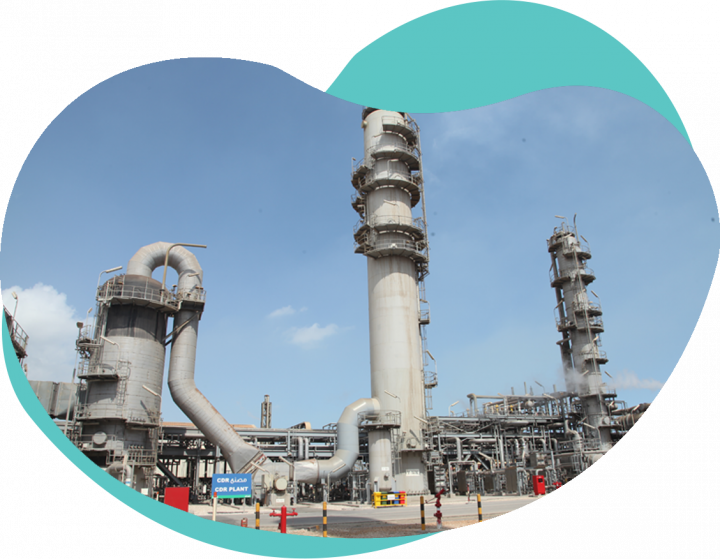
Carbon Dioxide Recovery (CDR) Plant
Stepping up to the climate change challenge and playing our part in fulfilling the vision, we looked for innovative ways to reduce our greenhouse gas emissions into the atmosphere. The CDR, in partnership with Mitsubishi Heavy Industries (MHI), is an innovative solution that reduces QAFAC’s total emissions and meets a business need by reusing the recovered CO2 in our methanol production. The CDR plant is first plant to recover carbon dioxide from a methanol plant and re-inject it into methanol production and is the largest plant of its kind built by MHI. Moreover, the plant will recover 30 m3 of water per hour from flue gas, which will be re-used in the production process. This is expected to reduce the company’s total water intake by 16% based on the latest intake figures.
ENVIRONMENT BENEFITS FROM QAFAC CARBON DIOXIDE RECOVERY UNIT
Taking care of the environment is one of the three basic pillars of our sustainable growth. QAFAC, in its efforts to operate sustainably, implements numerous projects and initiatives focused on minimizing the impact of our operations on the environment. Some of the projects stand out as best practices in the industry and have attracted attention from numerous companies trying to share QAFAC’s experience in implementing environmental protection measures. The environmental issue of climate change affects everyone on the globe. Human impact related to greenhouse gas emissions is scientifically proven to influence change in global temperatures. By commissioning the Carbon Dioxide Recovery (CDR) plant in 2014, QAFAC has demonstrated a world- class example of achieving sustainable growth of production, i.e. utilizing production resources for maximum efficiency whilst simultaneously avoiding significant emissions of greenhouse gas CO2 into the atmosphere. With the installation of the CDR plant, QAFAC became self-sufficient in generating CO2 gas, which is used as input material for methanol production. Replacing purchased CO2 with its internally generated gas. In addition to increasing methanol production by 250 MT/day and reducing 500 MTPD of CO2 emissions to atmosphere and converting it to a clean fuel.
Statistics
Reduction of 500 MTPD of CO2 emissions to atmosphere and converting it to a clean fuel.
This is equivalent to:

CO2 emitted by
32,000
vehicles

Recovering
30 m3 / hr.
of water vapor from flue gas and recycling it to the DM Plant, thus reducing fresh water consumption.
